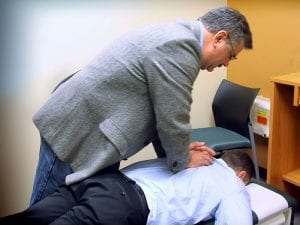Be sure to prioritize your well-being by moving to safety and valuing medical intervention.
A car accident can inflate what originally appeared to be just an uncomplicated day into a whirlwind of surprise, confusion, and anxiety. Such an overwhelming period makes it necessary to gauge what steps must be taken in order to care for one’s health, rights, and financial concerns. Focus on your well-being and engage an attorney for guidance through the legal corridor. If you are unsure where to start, here is a rundown of five steps you need to take following a car accident.
Check for Injuries and Ensure Safety
Check yourself for apparent injuries, then check your passengers if you are not alone. If you are uninjured and can safely do so, consider helping others, but do not move anyone who may have injured their neck and back. This is unless they are in danger, for example, in a vehicle fire.
If no one has serious injuries, or your vehicle locks the traffic and is drivable, move it to the side of the road. Turn on hazard lights to alert other drivers about your condition and prevent further mishaps. If the vehicle is not movable, then stay inside with seatbelts fastened.
Call Emergency Services
Calling 911 sends police and, when necessary, medical responders to the scene. In cases where serious injuries are sustained, they may be in a position to administer medical treatment that stops the conditions from worsening.
Official reporting is also paramount when approaching insurance companies and liability issues. The police report would also be helpful for any legal claim after the accident since it would prove what happened as an unbiased account. Cooperation with the officers is necessary by giving proper and relevant information.
Document the Accident Scene
Take clear pictures of the damage in all vehicles involved from different angles, any visible injuries, and the surroundings, such as road conditions and signs. This serves as visual evidence when filing your insurance claims or if you are to support your case in court.
Note down vital information about all the parties, such as names, contact details, vehicle details, and insurance policy numbers. If there are any witnesses around, ask for their contact information. A complete documentation of the scene and those related may be very helpful in drawing a stronger case for your claim.
Seek Specialized Medical Attention
Even without pain, it is always better to consult a doctor or other qualified medical professional following a car accident. Internal injuries like whiplash may take some time to manifest symptomatically.

They might initially be pain-free yet gradually ramp up in terms of pain and debilitating effects. If you have musculoskeletal distortions or misalignments, specialized care from a chiropractor after a car accident may be necessary. They’ll plan on how to restore your joint’s position around the neck and spinal regions. These chiropractic sessions will not only help reduce pain but also movement and strength.
Notify Your Insurance Company
Most insurance companies want an incident to be reported as soon as possible to help them process the claim quickly and efficiently. To that end, be ready to give any information about the accident and submit all relevant paperwork you might have collected from the scene, such as photographs and witness information.
Filing the claim will expedite the repair operations and, if necessary, compensation. It is also a good time to refer to your insurance policy to see what coverage applies to your situation. Remember not to have a discussion about the fault with your insurance provider until after consulting a legal professional.
Endnote
After an accident, it’s possible to bounce back with the right efforts. Think about the legal aspects, such as through engaging an attorney. Be sure to prioritize your well-being by moving to safety and valuing medical intervention.


Join the conversation!